37 Power Equipment Limitation And Safety
Learning Objective
Use power equipment within design limitations.
Key Questions
What are the safe uses of various power equipment?
SIGA Job Hazard Analysis
SIGA will participate in a process known as Job Hazard Analysis to ensure positions are at acceptable safety levels and that task/jobs are completed safely. A JHA provides analysis of each task, identifies the hazard with each job step, and assists in the creation of Safe Work Practices (when required).
How to Complete a Job Hazard Analysis
Breaking Down the Basic Sequence of Steps:
- Break down the task into steps ensuring the steps are in the correct sequence;
- It is important not to make the steps too general or too detailed (a rule of thumb is to have most jobs in ten (10) steps or less);
- Make notes about what is done rather than how it is done; and
- Once completed, the JHA should be discussed with all employees to make sure that all the basic steps have been identified and are in the correct order.
Identifying Potential Hazards
Once the basic steps are completed, potential accidents or hazards must be identified at each step:
- Based on knowledge of the job performed, comments through employees, etc. list the things that could go wrong at each step.
A series of questions could be asked when looking for potential hazards:
- Can any body part get caught in or between objects?
- Do tools, machines, or equipment present any hazards?
- Can the worker make contact with harmful objects or substances?
- Can the worker, slip, trip or fall?
- Can the worker suffer strain from lifting, pushing or pulling?
- Is lighting a problem?
- Are there dusts, fumes, mists or vapors in the air?
Determining Likelihood
How likely is the risk of the hazard to happen?
- Very Likely – Often and/or expected
- Likely- Occasional and/or possible
- Unlikely- Rarely, potential in special circumstances
Determining Impact
How severe is the risk of the hazard to happen?
- Major – Fatal, multiple fatalities and/or major loss of equipment
- Moderate – First aid (moderate), medical aid and/or loss of equipment
- Minor – No loss, near miss, first aid (minor)
Identify the Level of Risk
For each potential accident, identify the level of risk based on the likelihood and Impact of the accident. Cross reference Likelihood to Impact on the chart below to assign a risk rating
Hazard Rating
1. Low – Does not represent significant loss, make all required individuals aware
2. Medium – Make everyone who could be exposed aware, identify and initiate correction immediately.
3. High – Take immediate steps to protect workers. Contact supervisor. Safe Work Procedure Required
4. Extreme – Stop immediately and correct concern only if safe to do so, report to supervisor.
| Very Likely |
Medium 2 |
High 3 |
Extreme 4 |
| Likely |
Low 1 |
Medium 2 |
High 3 |
| Unlikely |
Low 1 |
Low 1 |
Medium 2 |
| What is the chance it will happen? | Minor | Minor | Major |
Eliminate the Hazard
- Choose a different process;
- Modify an existing process;
- Substitute with less hazardous substance;
- Improve environment (ventilation); or
- Modify or change equipment/tools.
Contain the Hazard
If the hazard cannot be eliminated, contact might be prevented by using enclosures, machine guards, worker booths or similar devices.
Revise Work Procedures
Consideration might be given to modifying steps which are hazardous, changing the sequence of steps, or adding additional steps (such as locking out energy sources).
Reduce the Exposure
These are typically the least effective and should only be used if no other solutions are available.
Communicating Job Hazard Analysis to Employees
After completing the Job Hazard Analysis, train/retrain all applicable employees in the manufacturers operating instructions and the internal Job Hazard Analysis to ensure they understand the hazards associated with the task and how to safely use the material(s).
Review the Job Hazard Analysis whenever there is a change in the task, a large turnover in staff, if there are a number of injuries incurred by completing the task(s), and at a minimum on an annual basis.
Tasks identified as High Risk/Extreme or Frequency of less than once a year, require a Safe Work Practices Form to be completed.
Identifying and Usage of Power Mobile Equipment
A power mobile equipment is defined as ” a self-propelled machine or a combination of machines, including a prime mover, that is designed to manipulate or move materials or to provide a work platform for workers” (The Occupational Health and Safety Regulations, 2020, p. 10). When using any machinery, safety is the number one priority. Workers must be appropriately trained and able to safely operate the equipment. Here is some equipment that you should be familiar with:
| Equipment Name | Picture | Function |
| Fork Lift | 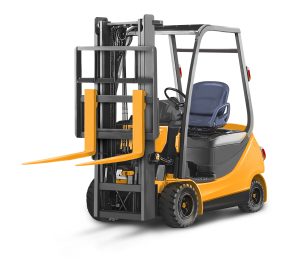 |
a self-propelled machine that has a power-operated upright, angled or telescoping lifting device that can raise and lower a load for the purpose of transporting or stacking.(The Occupational Health and Safety Regulations, 2020, p. 9) |
| Scissor Lift | 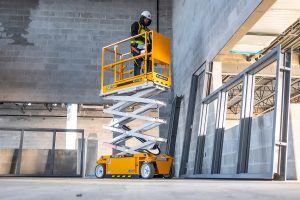 |
a set of cross-braced arms that move up or down to raise or lower a load-bearing platform attached to the top of the assembly.
(Handling Specialty, 2023) |
| Skid Steer | 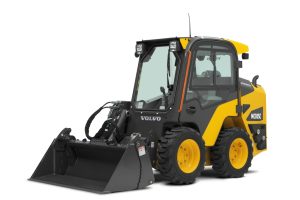 |
a self-propelled machine that has lift arms in a shovel-like form used to lift and move materials such as dirt, snow, etc. |
| Boom Lift | 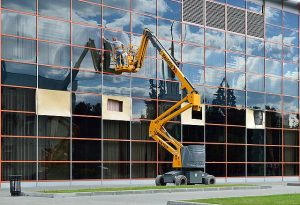 |
a hydraulic arm connected to a platform or bucket supported by a four-wheel base, allows horizontal and vertical movement to preform lifts. |
| Trailers (strap load limit) | 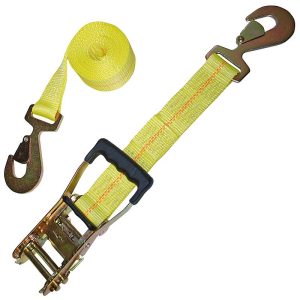 |
sturdy straps with a latch used to keep items and equipment securely in place during transport or movement. |
| Ride-On Vacuum | 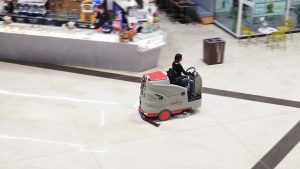 |
a ride-on equipment used to scrub or clean the floor and/or carpet. |
| Equipment Name | Do’s | Don’ts |
| Fork Lift |
|
|
| Scissor Lift |
|
|
| Skid Steer |
|
|
| Boom Lift |
|
|
| Trailers (strap load limit) |
|
|
| Ride-On Vacuum |
|
|
Always follow manufacturer directions and company policies to ensure safe usage of the equipment and a safe working environment for all.
Copyright © 2020 The Occupational Health and Safety Regulations. All rights reserved. From Occupational Health and Safety Regulations, 2020, S-15.1 Reg 10 (hcsas.sk.ca)
Copyright © 2023 Handling Specialty. All rights reserved. From Custom Material Handling Solutions – Handling Specialty
